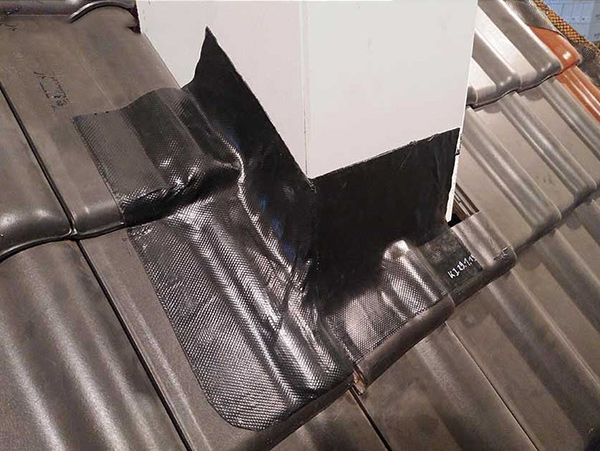-
tel:
+86 13482234221 -
email:
andrea.chen@kejian-china.com
What is the Use of Lead-Free Flashing Tape on Tile Roofs?
Jun 25, 2025
Preface
In modern construction, roof waterproofing is a core element in ensuring building durability and residential comfort. For tile roofs— a traditional and widely used roof type— waterproofing at joint areas (such as intersections between gables, chimneys, dormers, and the roof surface) is particularly critical. Traditional metal flashing, due to issues like welding requirements, complex installation, and susceptibility to deformation, is gradually failing to meet modern construction demands for efficient, convenient, and long-lasting waterproofing. As a new type of auxiliary roof waterproofing material, lead-free flashing tape, with its "flexible" characteristics, is emerging as the preferred solution for joint waterproofing on tile roofs. This article will explore the characteristics of lead-free flashing tape and its specific applications on tile roofs, analyzing its core value in building waterproofing.
Characteristics of Lead-Free Flashing Tape
Lead-free flashing tape is a new material designed specifically for joint waterproofing on roofs. Its core characteristics can be summarized as follows:
- Stable material and strong adaptability: It uses aluminum foil or polymer film materials (e.g., polyethylene, polypropylene) as the base, combined with a butyl rubber adhesive layer. It exhibits excellent anti-aging properties and weather resistance, enabling stable use in environments ranging from -5°C to 45°C, and adapts to expansion and contraction deformation of tile roofs caused by temperature changes.
- Strong self-adhesion and easy installation: Equipped with a butyl rubber adhesive layer (0.2-3mm thick), it requires no welding or additional adhesives. Simply peel off the release film and press to bond, significantly simplifying the installation process and reducing labor costs.
- Exceptional plasticity and ductility: The base material forms a wrinkled structure through unidirectional extrusion (with ≥80 wrinkles per 10cm). It has a tensile rate of ≥50%, allowing bidirectional stretching to easily conform to curved or sloped surfaces where tile roofs meet vertical walls, avoiding fractures caused by excessive rigidity in traditional flashing.
- Smooth surface and low maintenance: The aluminum foil or polymer film base has a smooth surface, making it difficult for dust, rain, or snow to adhere, thus reducing post-installation cleaning frequency. Its color retention (available in black, gray, red, etc.) harmonizes with tile roof tones, enhancing the aesthetic uniformity of the building.
Applications of Lead-Free Flashing Tape on Tile Roofs
The waterproofing challenges of tile roofs are concentrated in "joint areas"— intersections between the roof surface and vertical structures (e.g., gables, chimneys, dormers, pipes). These areas are prone to water leakage due to complex structures and vulnerability to temperature-induced deformation. Lead-free flashing tape directly addresses these issues:
- At the junction of sloped roofs and gables: The joint between a tile roof and a vertical gable wall is a "high-risk area" for water seepage. Lead-free flashing tape can extend from the roof surface to the gable wall (with a bonding height of 200-300mm), forming a continuous waterproof layer through self-adhesion to prevent rainwater from seeping into the wall along the joint.
- Around protruding structures like chimneys and dormers: The roots of protruding structures (e.g., chimneys, dormers) where they meet the roof surface are prone to cracks caused by thermal expansion and contraction. Lead-free flashing tape can be cut to appropriate sizes, wrapped around the roots of these protruding structures, and bonded using its ductility to cover irregular surfaces. Combined with adhesive edges, it effectively blocks water seepage paths.
- Improved installation efficiency and durability: Compared to the complex processes of welding and cutting required for traditional metal flashing, lead-free flashing tape only needs manual cutting, bonding, and pressing to complete installation. This reduces the time to process a single joint by approximately 50%. Its self-adhesion and anti-aging properties ensure long-term stability of the waterproof layer, reducing post-installation repair frequency.
Conclusion
In the field of building waterproofing in 2025, lead-free flashing tape, with its characteristics of "easy installation, high adaptability, and long service life," has become an important solution for joint waterproofing on tile roofs. From the joints between sloped roofs and gables to the roots of chimneys and dormers, lead-free flashing tape provides more reliable waterproof protection for tile roofs through stable materials and flexible adaptability, while also maintaining the aesthetic appeal of the building. As the construction industry increasingly demands "efficient, green, and long-lasting" waterproofing solutions, the application scenarios of lead-free flashing tape are bound to expand further, injecting new vitality into the roof waterproofing of more traditional and modern buildings.
Recent Posts

October 26, 2016
The Most Successful Engineering Contractor


